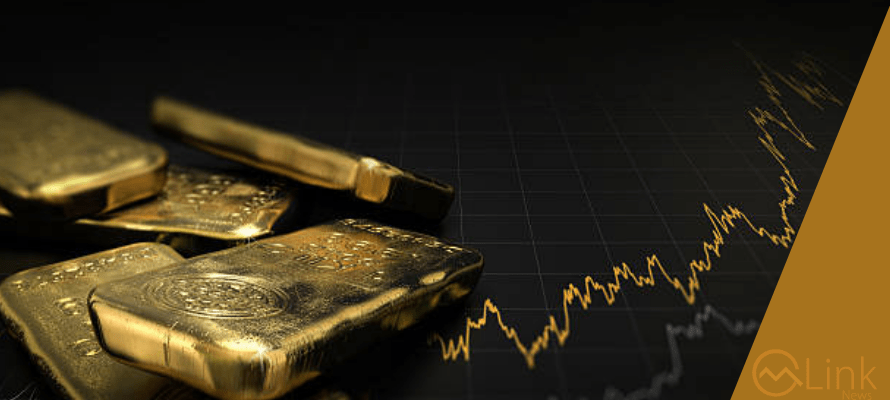Analysts see more upside for gold

By MG News | August 20, 2024 at 10:32 AM GMT+05:00
August 20, 2024 (MLN): Gold is in record-setting form, topping $2,500 an ounce on expectations that the Federal Reserve is poised to cut US interest rates.
The precious metal’s 21% year-to-date surge has made it one of the best performing major commodities in 2024, and banks including UBS Group AG and ANZ Group Holdings Ltd. say that there’s still scope for further gains, reported Bloomberg.
Prices are “heading toward $2,700 an ounce by around the middle of 2025,” said Wayne Gordon, commodities strategist at UBS Global Wealth Management, citing the Fed’s shift, central-bank buying, and demand for portfolio hedges.
With Fed Chair Jerome Powell set to offer clues on the outlook for monetary policy at the Jackson Hole symposium later this week, here are five charts that map out some of the main drivers that’ll shape the metal’s outlook.
Real Rates
Gold’s latest surge has come largely courtesy of expectations that US policymakers will start lowering rates soon, with a cut seen at their gathering next month.
That narrative has dragged real rates lower, creating a more favorable environment for bullion, which doesn’t pay interest.
The recent moves — higher gold prices and lower rates — signal that traditional macro drivers such as bond yields are returning to the fore.
Earlier this year, bullion advanced even as yields rose, an unusual pattern that surprised seasoned analysts. The decoupling at that point was largely due to strong central-bank buying, particularly in emerging markets.
Fund Positioning
As gold has pushed higher, hedge funds and speculators have been getting more engaged. Net-bullish bets on Comex futures stand close to the four-year high set in mid-July, according to Commodity Futures Trading Commission data.
A 9% rise in open interest last week implies investors are getting more optimistic about bullion, rather than just closing out short positions.
Still, in the near term, positioning now appears bloated, and funds may be vulnerable, according to Daniel Ghali, senior commodity strategist at TD Securities.
The next catalysts for a repricing of the Fed outlook will come at Jackson Hole, followed by the next US payrolls data, Ghali said.
ETF Investors
A similar scenario may be playing out in bullion-backed exchange-traded funds, with signs of greater interest in recent weeks.
While gold prices rose sharply in March and April, holdings in ETFs continued to see net outflows, with a global tally hitting the lowest since 2019 in mid-May.
From June, however, the tide seems to have shifted, with ETFs posting two months of net inflows.
OTC Demand
Demand in the over-the-counter market — where transactions are done through dealers or between buyers and sellers directly, without an exchange or clearing house — may be hard to track, but it’s been an important feature this year.
Strong physical bar-buying, particularly by family offices in Asia, helped gold consumption to register its best second quarter in at least 25 years, according to the World Gold Council.
The association of producers says further demand growth in the OTC market, which also includes some central-bank buying, is expected to be a key driver of gold’s rally.
Shanghai Premium
While many indicators appear positive, some are not, including readings from China. Earlier this year, a buying frenzy by local retail investors — coupled with purchases by the People’s Bank of China — helped to support prices.
Since then, the PBOC has paused buying. In addition, premiums on gold in Shanghai have weakened, flipping to negative in July and August, indicating soft demand.
Copyright Mettis Link News
Related News
| Name | Price/Vol | %Chg/NChg |
|---|---|---|
| KSE100 | 131,949.07 198.95M |
0.97% 1262.41 |
| ALLSHR | 82,069.26 730.83M |
0.94% 764.01 |
| KSE30 | 40,387.76 80.88M |
1.11% 442.31 |
| KMI30 | 191,376.82 77.76M |
0.36% 678.77 |
| KMIALLSHR | 55,193.97 350.11M |
0.22% 119.82 |
| BKTi | 35,828.25 28.42M |
3.64% 1259.85 |
| OGTi | 28,446.34 6.84M |
-1.02% -293.01 |
| Symbol | Bid/Ask | High/Low |
|---|
| Name | Last | High/Low | Chg/%Chg |
|---|---|---|---|
| BITCOIN FUTURES | 108,125.00 | 110,525.00 107,865.00 |
-2290.00 -2.07% |
| BRENT CRUDE | 68.51 | 68.89 67.75 |
-0.29 -0.42% |
| RICHARDS BAY COAL MONTHLY | 97.50 | 0.00 0.00 |
0.75 0.78% |
| ROTTERDAM COAL MONTHLY | 106.00 | 106.00 105.85 |
-2.20 -2.03% |
| USD RBD PALM OLEIN | 998.50 | 998.50 998.50 |
0.00 0.00% |
| CRUDE OIL - WTI | 66.50 | 67.18 66.04 |
-0.50 -0.75% |
| SUGAR #11 WORLD | 16.37 | 16.40 15.44 |
0.79 5.07% |
Chart of the Day
Latest News
Top 5 things to watch in this week
Pakistan Stock Movers
| Name | Last | Chg/%Chg |
|---|
| Name | Last | Chg/%Chg |
|---|




 Central Government Debt
Central Government Debt
 CPI
CPI